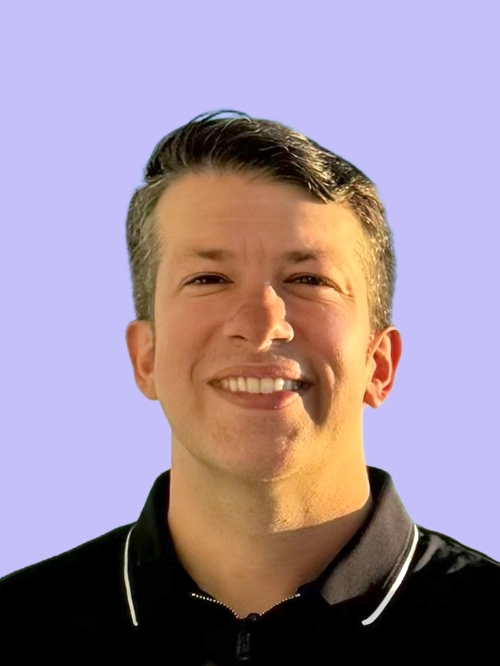
Mike Lovell is the SVP of Marketing at Class. He has dedicated his career to technology and the applications that can innovate the way people live and learn.

Mike Lovell is the SVP of Marketing at Class. He has dedicated his career to technology and the applications that can innovate the way people live and learn.

Technology is changing the way schools provide education to students, both in how learners participate, as well as how instructors teach. The evolution of virtual academics has introduced an entirely new level of flexibility and autonomy to both students and teachers. With school districts needing to become more innovative in addressing the obstacles they face—from teacher shortages to budget cuts and more—virtual academics offer creative ways to continue providing top-notch education while serving a greater number of students.
In partnership with EdWeek, Class convened a panel of virtual academy experts to discuss the impact this technology has had on their school districts and where they see the future of virtual academics.
In recent years, the landscape of education has evolved significantly, placing greater emphasis on student choice and autonomy. This has led to the need for school districts to embrace innovative changes more than ever before.
Learners, acting like consumers, want more choices for how and when they go about receiving their education. Jill Rogier, Head of Schools at Arizona State University Prep Academy, sees this in how programming is constructed at her prep academy, noting, “I don't think there's anything traditional about our digital program, but we are providing course options. We do have a synchronous live lesson for every course, every week—but, for some students, taking more of the content out of the LMS and putting it into the live session where kids want to come and engage and, again, have that Kahn World school type Socratic seminar and learn the material in that synchronous option, that's really exciting to me. I don't want to mandate. I just want to give kids so many choices that they really feel like they have the voice and choice to choose how they show up.”
Dr. Sharon Shewbridge, Director of Instructional Technology at Virginia Beach City Public Schools, adds, “[We] offer both. If a student has said, ‘Look, I'm working’ there's lots of things going on in people's world that [they] would prefer asynchronous classes, then those students get signed up in the asynchronous, but they have meetings with our grad coaches. They have meetings with our school counselor. So we're monitoring their success. I don't know that we could ever say there's a perfect balance, but if it's driven by student choice and parent support, then we feel like the balance happens naturally. We also have students that prefer synchronous. They want the face-to-face with the teacher.”
Kristen Disney, Managing Director of Specialty Courses at Epic Charter Schools, sees how choice impacts student engagement, noting, “A lot of the programs that I work with do a lot of asynchronous and synchronized learning with students, and it really impacts their desire or students' desire to tailor their education to fit their needs.”
In addition to providing a deeper number of learning options for students, ensuring that the coursework being undertaken is as fruitful as possible is also essential to keeping learners engaged and on track. Offering AP and dual-credit courses helps students not only begin preparing for higher education academics, it also helps address other issues such as affordability by shortening the number of semesters a student is in school. Offering these courses requires qualified, capable educators, however, and that can be difficult for some school districts to acquire. Virtual academics are an innovative way to allow more students access to these important courses even if the educator isn’t located at their physical school. Dr. Shewbridge echoes this sentiment, “A lot of small districts can't afford to have teachers with the credentials to do AP or a dual involvement.” Virtual academics can help solve that issue by taking the physical proximity out of the equation.
Rogier points out that not all college prep coursework has to be high-stakes, though, providing the example, “We also offer at ASU something called Universal Learning Courses or Learner Courses. This is just a lower risk for students in that they make the choice at the end of the course if they want to convert that to college credit. So, what we're really trying to do is close the gap in students that are in high school but wouldn't really consider starting college or their parents wouldn't even dream of them going to college because they're struggling in high school. How can we put all these layers of support in while still making sure we don't want to enroll them in college algebra and they get a C, and then that would prevent them from getting into a specific program down the road? I love that they can be exposed to a college course. We can provide all the support to those students so that they do successfully complete that course, but, if they don't, things happen, life happens, it's not going to negatively affect their college transcript if they don't complete. It's their choice on whether they convert or not. I love that option.”
School districts, moving forward, will need to continue to innovate in order to overcome obstacles and deliver educational opportunities that fall in line with the needs and desires of students and their families. As Dr. Shewbridge points out, “There are lots of families who are finding that what we experienced as K-12, the normal way kids go through school, doesn't have to be that. I think the pandemic showed a lot of parents that, ‘Wow, I could do this a lot differently with my students. My kids are already finished with their homework, but they spend seven hours in school, and they could be done in an hour. Maybe let me rethink what I'm doing with my kids.’ Or the kids that had behavior problems. ‘I'm bored out of my mind, mom, because, see, I finish all my work in two hours and I have to sit around for five while the rest of the class happens.’ I think students are [ready for this change]. The rest of us have to catch up and get away from, ‘Well, this is always how we've done it’ to, ‘Wow, we've got to be innovative because kids and families are starting to figure some things out that could be really beneficial long-term.’”
Are you ready to discover how your school district could benefit from a virtual academy offering? Reach out to a Class team member today, and let’s explore innovative ways to meet your students and their families where they’re at. Want to check out the full insights from our expert panel? The entire webinar recording can be found here.

Mike Lovell is the SVP of Marketing at Class. He has dedicated his career to technology and the applications that can innovate the way people live and learn.

Mike Lovell is the SVP of Marketing at Class. He has dedicated his career to technology and the applications that can innovate the way people live and learn.
Get our insights, tips, and best practices delivered to your inbox

Sign up for a product demo today to learn how Class’s virtual classroom powers digital transformation at your organization.

Features
Products
Integrations